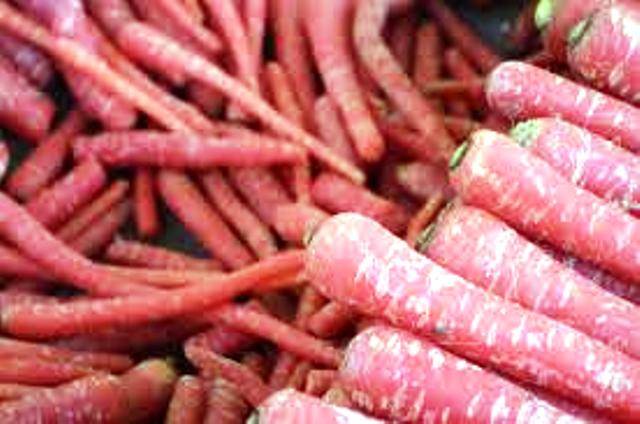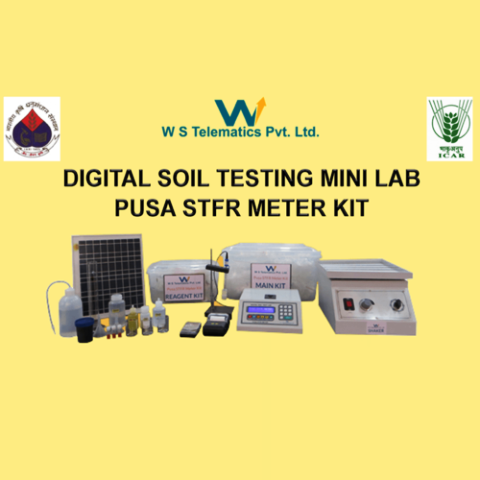
Indian Agricultural Research Institute has been the paragon of excellence in agricultural research and education in India. The varieties and technologies developed by IARI have been instrumental in enhancing crop productivity as well as the income of farmers manifold besides attaining national food security. It has also provided leadership to the National Agricultural Research System for advancements in agricultural research, education and extension.
It is a matter of immense pleasure and pride for the Hon'ble Director to present before you the school-wise Institute’s significant accomplishments.
School of Crop Improvement
The population of India is estimated to reach 1.66 billion by 2050. Feeding the growing population is a major challenge in view of the depleting natural resources such as land and water, fragmentation of land and adverse effect of changing climate on agriculture. The research efforts at Indian Agricultural Research Institute are focused on developing crop varieties with resistance to biotic and abiotic stresses, high yield and improved grain and nutritional quality.
During 2018-19 the institute released a rice variety named “Pusa Sambha 1850” for Chhattisgarh and Odisha. This is a high yielding, non-basmati medium slender grain variety with resistance to blast disease.
The institute is also credited with the release of Maize hybrid “Pusa Super Sweet Corn 1” with
high sweetness and good fodder quality.
Two new wheat genotypes (HI 1612 and HD 8777) developed by ICAR-IARI, Regional Station,
Indore were notified by CVRC vide gazette notification number S.O. 1379(E).
HI 1620, a bread wheat genotype developed by ICAR-IARI, Regional Station, Indore was identified for release under timely sown, restricted irrigation conditions of North Western Plains Zone. HI 1620 has significant yield advantage (up to 13.4%) over the checks. In Pearl millet, the neutraceutical grain, a number of inbred lines such as PPMI 903, PPMI 904, PPMI 906, PPMI 952, PPMI 958 and PPMI 959 having high iron (72-113ppm) and zinc content (40-55ppm) have been developed.
In chickpea, high yielding extra-large kabuli chickpea (>50g/100 seeds) genotypes having export potential, tall and erect plant types suitable for mechanical harvesting and determinate type to improve its adaptation to cool climate and high fertility areas have been developed.
In pigeonpea, extra early and early varieties with determinate growth habit, dwarf stature and amenable to mechanical harvesting have been developed for crop diversification and enhancing pulse productivity.
A total of 1554.23 quintals of quality seed was produced including 928.3 quintals of breeder seed of different crops for promoting quality seeds among the farmers. Under participatory seed production programme, a total of 553.6 quintals of wheat seed (TL) of different varieties was produced.
School of Basic Sciences
The basic and strategic research work carried out at Division of Plant Physiology led to the identification of novel donors for tolerance to drought and heat stresses and nitrogen use efficiency, and genes and promoters for abiotic stress tolerance.
Towards bridging genotype-phenotype gap, phenomics and Genome-wide Association analysis
(GWAS) carried out at “Nanaji Deshmukh Plant Phenomics Centre”. Machine learning and Artificial Intelligence based analysis are being employed in phenome data analysis. This led to the identification of germplasm lines of rice and wheat with >20% higher water use efficiency (WUE) as compared to the known checks viz., Nagina 22 and C306, respectively, and QTLs for WUE.

School of Horticultural Science
“Pusa Aditi” grape hybrid was released by the Delhi State Variety Release Committee for its commercial cultivation in NCR region. Grape Hybrid- Pusa Swarnika (Hur x Cardinal) a sweet and big berry type was released during Convocation-2018.
Five mango hybrids, namely, H-11-2, H-8-11, H-3-2, H-1-5 and NH-7-2 have been performing consistently better in terms of regularity in bearing, yield, red peel colour and desirable fruit quality traits were identified for multiplication and further evaluation on a large scale. In mango, polyembryonic rootstock Odor was identified as potential rootstock for Pusa Arunima for improving yield and fruit quality.
Two varieties viz. cherry tomato ‘Pusa Cherry Tomato-1’ and onion ‘Pusa Sobha’ have been released and notified by CVRC for cultivation under protected condition in Delhi NCR and major onion growing states of the country, respectively. Onion variety ‘Pusa Sona’ has been released by All India Network Project on Onion and Garlic and recommended for notification by CVRC.
Ten new varieties, viz. Longmelon ‘Pusa Utkarsh’, round melon ‘Pusa Raunak’, cucumber (parthenocarpic, gynoecious) ‘Pusa Seedless Cucumber-6’, muskmelonPusa Madhurima’ & ‘Pusa Sarda’, brinjal ‘Pusa Safed Baingan-1’ & ‘Pusa Hara Baingan-1’, okra (resistant to YVMV) ‘Pusa Bhindi-5, garden pea ‘Pusa Prabal’ and chenopodium ‘PusaBathua Green’ and two hybrids viz. sponge gourd ‘Pusa Shrestha’ and bitter gourd ‘Pusa Hybrid-4’ have been released for cultivation in Delhi NCR region and recommended for notification.
A total of 1.5 q breeder seeds and 12.39 q TL seeds of IARI vegetable varieties were sold a revenue of Rs. 9.47 lakhs was generated.
School of Plant Protection
Novel biogel based green biocontrol formulations of entomopathogenic nematode, S. thermophillum have been developed, employing natural hydrophilic polymer and organic acid cross-linked hydrogel. Novel strategy of enhancing survival of EPN juveniles through arresting lipid metabolism has C, been employed. The prepared formulation exhibit shelf life of more than 4 months at 35 hitherto unknown range reported so far.
School of Natural Resource Management
An Integrated Farming System (IFS) Model has been developed by the Agronomy Division of IARI, for ensuing livelihood security of small and marginal farmers. This 1 ha area IFS model intended for generating year-round income from appropriate integration of crops, dairy, fishery, duckery, biogas plant, fruit trees and agro-forestry, provided net returns of Rs 3,78,784/ha/year with an employment generation of 628 man-days.
The soil testing tool, named Pusa Soil Test and Fertilizer Recommendation (STFR) Meter, has been improved to analyze fourteen parameters viz., pH, EC, OC, available nutrients [(derived N), P, K, S, Zn, B, Fe, Mn and Cu], gypsum requirement and lime requirement. This soil testing kit can be used for generating soil health card. It is widely licensed and a few firms have already brought it in the market.
The WTC has developed an early agricultural drought monitoring and assessment technique in collaboration with the University of Nebraska, Lincoln, USA and was successfully validated on two distinct drought prone regions namely, Marathwada and Karnataka.
The eco-friendly wastewater treatment technology of the Centre was recently commercialized to the UP Jal Nigam for developing an eco-friendly wastewater treatment facility of 100 KLD capacity at the residential boarding school of the Jawahar Navodaya Vidyalaya at Kasiram Nagar in Uttar Pradesh and of 50 KLD capacity at the All India Women’s Conference office at New Delhi.
Two unique state of art facility i.e. T-FACE (Temperature-free air carbon dioxide enrichment) and Controlled Environment Glasshouse (CEG) has been developed to study the interactive effect of temperature and CO2 on productivity and quality of crops.
Farm mechanization assumes greater significance for energy and input use efficiency. Two patents were obtained during 2018 - one for animal feed crusher (1986/DEL/2004) (Patent No: 283378) and powered animal feed mixer (1983/DEL/2004) (Patent No: 302775). A digital seed rate calibration system has been developed for precise seed rate.
More than 20 states of India have been benefitted by Pusa biofertilizer technology. Pusa biofertilizers have covered more than 11,000 ha of land during last six years, both in organic and integrated nutrient management of different crops.
School of Social Sciences
It has been estimated that about 494 million tonnes (mt) of dry crop residue was produced annually in India from the 26 crops. About 112 mt of crop residue was available as surplus for bioenergy production.
The impact of Pusa Rudhira variety (Carrot) has been evaluated. The direct R&D cost invested in varietal development is Rs 1.85 crore at the 2014-15 price. The net returns from Pusa Rudhira was Rs1.61/- lakhs / ha and BCR was1.54, which was higher when compared to the other competing carrot varieties, respectively.
The Indian NARS Statistical Computing Portal developed by IASRI is being extensively used throughout NARES and helped the researchers in analyzing their data in an effective manner. On an average there are more than 300 log-ins per day.
KRISHI Portal (http://krishi.icar.gov.in) has been enriched through providing links of several
online resources available/developed at different ICAR institutes.
An institutional mechanism for upscaling IARI Post Office Linkage Extension model has been developed with Department of Posts, Government of India. Through this model, 2.3 tonnes of IARI paddy varieties were disseminated in 46 districts of 12 states. Similarly, 2.76 tonnes of IARI wheat varieties were disseminated in 9 districts of 6 states. Social learning and convergence approach of extension have been found useful for climate change adaptation.
Centre for Technology Assessment and Transfer (CATAT) is disseminating IARI technologies under its outreach extension programme at different locations of the country using different approaches like development of model villages through integrated approach, National Extension Programme through Linkages with NARS (17 ICAR Institutes/SAUs) and partnership with 28 Voluntary Organizations.
Two Seed Hubs, one in Northern India and another in Eastern part of the country, have been
established under the IARI-VO collaborative programme.
To promote the direct interface of scientists with the farmers and strengthen the lab to land process, Mera Gaon Mera Gaurav programme is being implemented by IARI in 120 cluster comprising of more than 600 villages in NCR.
















